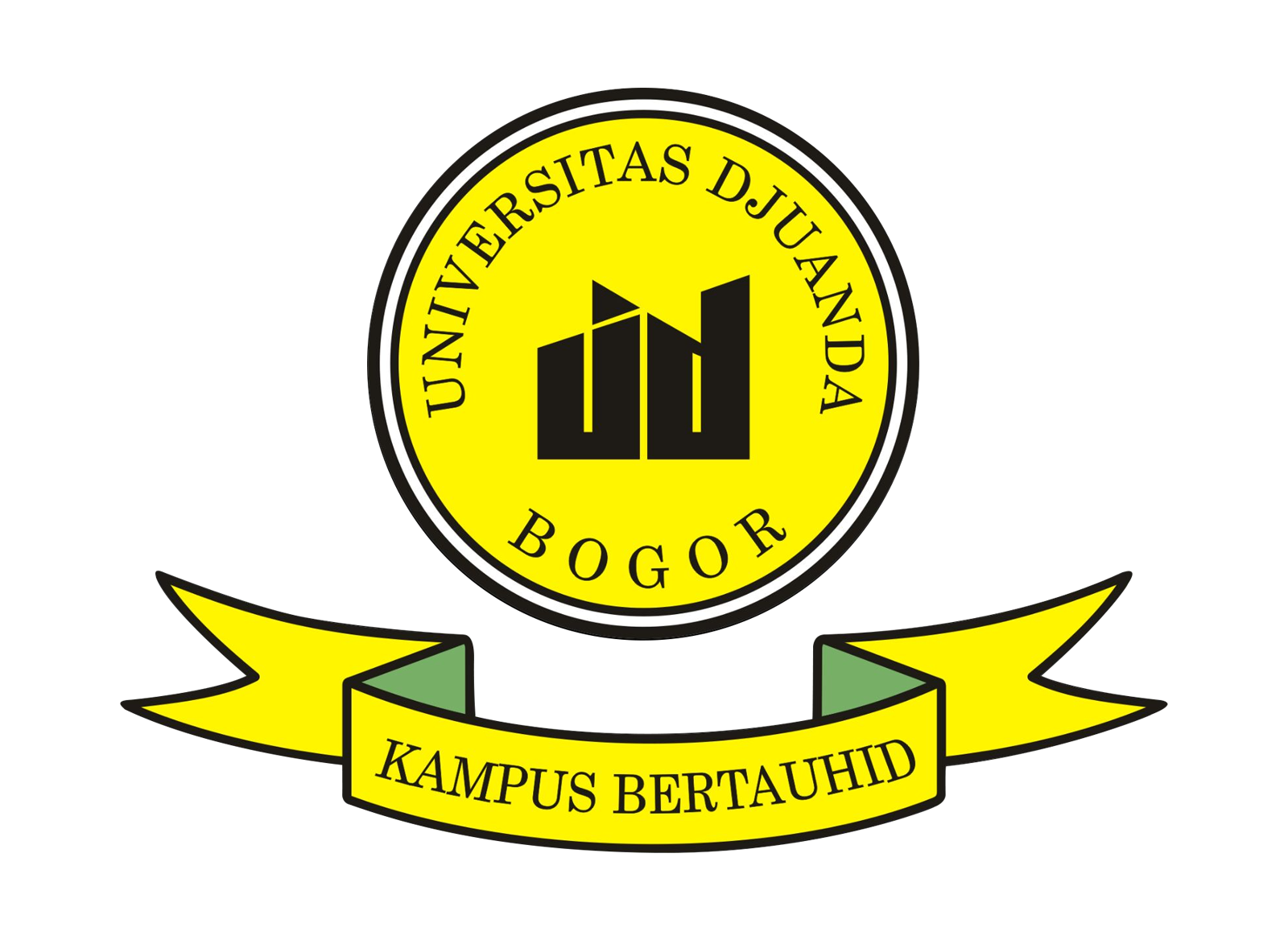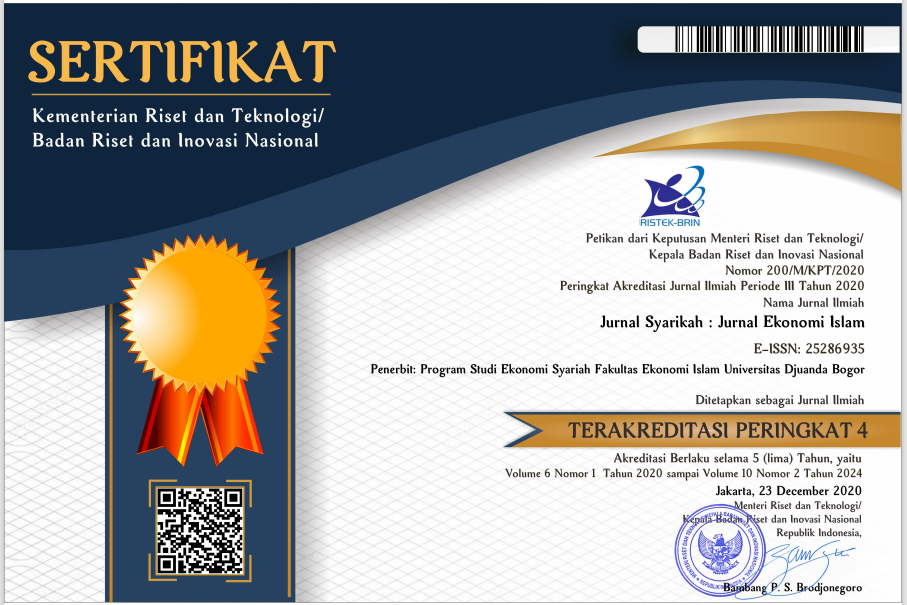CROWDFUNDING FOR DEVELOPING WAQF LAND A STUDY ON MALAYSIA
DOI:
https://doi.org/10.30997/jsei.v6i1.2502Keywords:
The Donors, Crowdfunding, Waqf Land, Logistic Regression, MalaysiaAbstract
This present study aims to develop an alternative model of financing that address theproblems of waqf land financing in Malaysia, analyse the probability that waqf institution
will use the proposed model and recommend policies to enhance the optimisation of
crowdfunding for developing waqf land. This study focuses on potential donors in the four
states in Malaysia, namely Pahang, Pulau Pinang, Selangor and Johor since these areas have
significant waqf lands. The analysis is conducted using statistical analysis and logistic
regression analysis. The study finds that there is a high probability of donors willing to use
the proposed model (CWM), particularly among non-married donors, females, low-middle
income donors, and those with more awareness of crowdfunding and waqf.
References
Al Ma'amun, Suhaili and Shafiai, M. Hakimi Mohd, and Adnan, M. S. A. (2016). Waqfworld when Waqf Meets Crowdfunding in Islamic Finance Today (Asiff Hussein: editor). Colombo, Sri Lanka: Pioneer Publication.
Benyounis, Husain. (2015). Why There Is A Need To Engineer The Awqaf Industry: Awqaf NZ Experiece. A presentation at International Centre for Waqf Research (ICWR) Monthly Waqf Talk Series. 18 September 2015.
Çizakça, Murat. (1998). Awqaf In History and Its Implications for Modern Islamic Economies. Islamic Economic Studies: Vol. 6, No. 1, November 1998.
Cizakca, M. (2009). Incorporated Cash Waqfs: Islamic Non-Banking Financial Instruments form the Past to the Future. INCIEF, 16.
Hemer, Joachim (2011). A Snapshot on Crowdfunding. Working Papers Firms and Region, No. R2/2011, ISSN 1438-9843.
Hosmer, D.W. and Lemeshow, S. (1989). Applied Logistic Regression. John Wiley & Sons, Inc., New York.
JAWHAR. (2012). Jabatan Waqaf, Zakat dan Haji. http://119.110.108.126/spmwj/. http://www.jawhar.gov.my/iwakaf.
Kahf, M. (2007). The Role of Waqf in Improving the Ummah Welfare. Singapore International Waqf Conference 2007 on 6-7 March 2007., (p. 2). The Fullerton Hotel Singapore.
Mohamad, N. A., Kader, S. Z. S. A., & Ali, Z. (2012). Waqf Lands and Challenges From the Legal Perspectives in Malaysia. IIUM -Toyo Symposium 2012. Sustainable Built Environment : Lessom Learned from Malaysia and Japan, 1993(Act 505).
Mohammad, M. T. S. and Iman. (2006). Obstacles of the Current Concept of Waqf to the Development of Waqf Properties and the Recommended Alternative. Malaysian Journal of Real Estate 1 (1), 27-38
Mohd, Datuk Haji Anan bin C. (2012). Mohd, Datuk Haji Anan bin C. (2012). Negeri Sembilan: Seminar Peletakhakan Tanah Wakaf : Cabaran dan Harapan pada 25-27 April 2012
Mohsin, Magda. I. (2008). Current Application of Cash-Waqf- The Social and Economic Empowerment of the Ummah. International Seminar on Awqaf 2008. Johor Bharu.
Mohsin, M I. (2012). Waqf-Shares: new product to finance old waqf properties. Banks and Bank Systems (open-access), 7(2. Banks and Bank Systems, Volume 7, Issue 2, 2012.
Mohsin, M.I. (2013). Financing through cash-Waqf: A Revitalisation to Finance different needs. International Journal of Islamic and Middle Eastern Finance and Management. Vol.6.No.4, pp.304-321
Mohsin, M. I. A., Dafterdar H, Cizakca M., Alhabshi S. O., Razak S. H. A., Sadr S. K., Anwar T., and Obaidullah M. (2016). Financing the Development of Old Waqf Properties.
Ngah, N. (2012), December Monday, 25 October, available at: www.jawhar.gov.my/index.php/ms/akhbar/123-artikel-bh25102012.
Nor, Norhaliza B. M. and Mohammed, Mustafa O. (2009). Categorization of Waqf Lands and their Management Using Islamic Investment Models: the Case of the State of Selangor, Malaysia. Paper presented at the International Conference on Waqf Laws & Management: reality and Prospects, IIUM, 20-22 October 2009.
Pitchay, Anwar bin Allah. (2015). The Role of Cash waqf in Rejuvenation of Malaysian Waqf Assets. Unpublished PhD Dissertation: International Islamic University Malaysia
Pitchay, A. A., Kameel, A., Meera, M., & Saleem, M. Y. (2015). Factors Influencing the Behavioral Intentions of Muslim Employees to Contribute to Cash- Waqf Through Salary Deductions. Journal of King Abdulaziz University: Islamic Economics, 28(1), 63–98.
Rashid, S. K. (2012). Certain legal and administrative measures for revival and better management of awqaf (Unpublished).
Sabree, Ahmad, Munshi, Umar, and Chignell, R. A. (2018). Combining Fintech, Crowdfunding And Cash Waqf to Create Sustainable Charity: The Case Of Waqf World Growth Foundation in Islamic Commercial Law Report 2018. Kuala Lumpur: ISRA, Thomson Reuters and IRTI publication.
Stock, James & Mark Watson. (2007) Introduction to Econometrics, Boston: Pearson Education Inc.
Suhaili, Nur Aqidah & Mohd Rizal Palil. (2016). Crowdfunding: A Collaborative Waqf Based Internet Platform. International Journal of Business, Economics and Law, Vol. 11, Issue 5 (Dec.) Issn 2289-1552.
Thaker, Mohamed Asmy bin Mohd Thas. & Hassanudin Bin Mohd Thas Thaker (2017). Innovative Financing of Equity Crowdfunding: Application On Waqf Land. International Islamic Fund and Wealth Management Forum (IIFWMF) –Organized by The IiBF in Collaboration With The PNB.
World Bank (2013). Crowdfunding’s Potential For The Developing World. infoDev, Finance and Private Sector Development Department, Washington DC.
Yamane, Taro. (1967). Statistics, An Introductory Analysis (2nd Edn.). New York: Harper and Row.
YWM (Yayasan Wakaf Malaysia). (2016). Waqf Development Transformation Master Plan Study in Malaysia (General Edition). Selangor: Firdaus Press Sdn Bhd
Downloads
Published
How to Cite
Issue
Section
License
Authors who publish with Jurnal Syarikah: Jurnal Ekonomi Islam agree to the following terms:
- Authors retain copyright and grant the journal right of first publication with the work simultaneously licensed under a Creative Commons Attribution 4.0 International License that allows others to share the work with an acknowledgement of the work's authorship and initial publication in Jurnal Syarikah: Jurnal Ekonomi Islam.
- Authors are able to enter into separate, additional contractual arrangements for the non-exclusive distribution of the journal's published version of the work (e.g., post it to an institutional repository or publish it in a book), with an acknowledgement of its initial publication in Jurnal Syarikah: Jurnal Ekonomi Islam.
- Authors are permitted and encouraged to post their work online (e.g., in institutional repositories or on their website) prior to and during the submission process, as it can lead to productive exchanges, as well as earlier and greater citation of published work
SURAT PERNYATAAN PEMINDAHAN HAK CIPTA[1]
Yang bertanda tangan di bawah ini adalah penulis naskah yang berjudul:
yang diajukan untuk dipublikasikan pada Jurnal Syarikah : Jurnal Ekonomi Islam ISSN 2442-4420 menyatakan bahwa:
Kami bersedia memindahkan hak publikasi, distribusi, reproduksi, dan menjual naskah kamiyang berjudul tersebut di atas sebagai bagian dari Jurnal Syarikah kepada Dewan Redaksi Jurnal Syarikah : Jurnal Ekonomi Islam ISSN 2442-4420
Demikian surat pernyataan ini saya buat dengan sadar, penuh rasa tanggung jawab, dan tanpa paksaan dari pihak mana pun!
No | Nama Penulis (lengkap dengan gelar akademik) | Nama dan Alamat Institusi, email | Tanda Tangan | Tanggal |
1 |
|
|
|
|
2 |
|
|
|
|
3 |
|
|
|
|
4 |
|
|
|
|
5 |
|
|
|
|
[1] Dikirim ke Dewan Redaksi Jurnal Syarikah, Program Studi Ekonomi Islam Fakultas Ekonomi Islam Universitas Djuanda Bogor, Gedung B Lantai IV Jl Tol Ciawi No. 1 Kotak Pos 35 Ciawi Bogor 16720, difaksimilikan ke 02518240985, dan hasil scanning-nya diemailkan ke Jurnal.Syarikah@unida.ac.id


